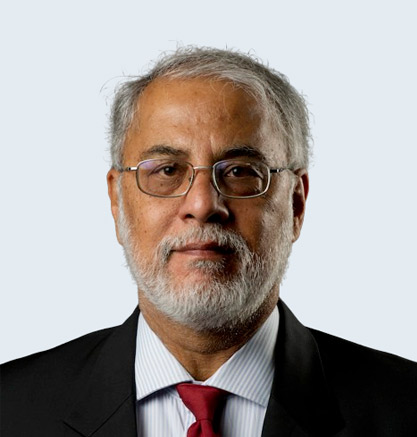-
CENTRES
Progammes & Centres
Location
Domestic climate of social peace and stability needed to turn the tide

When the future looks increasingly uncertain, there is some value in looking back to navigate towards our future. We seem to have lost our way as an economy, if not as a nation. Just before the General Election, Rathin Roy, a member of the economic advisory council to the Prime Minister, warned that India could be headed for a structural crisis that could leave us stagnating in the low middle income trap.
‘Middle income traps’ are the stuff of academic debate, but their essence is that you remain stuck where you are. In our case, a country with just about 100 million of our 1.3 billion as a consuming middle class, while the others remain at the bottom, with no money, no healthcare, education or prospects.
Worries about the economy have now been superseded by concerns over the unity of the country itself. There is a blithe assumption that India will overcome all challenges to its integrity, just as it has in the past 70 years. But today, those charged with running the country seem to have become the biggest threat to it.
The Indic civilisation is an ancient entity, but India, the nation-state, only emerged in 1950. That Republic was a compact, based on a written agreement called the Constitution, that knit together the rump of British India left over after Partition and 560-odd Princely States. This India was created by the efforts of Mahatma Gandhi, Pandit Nehru, Sardar Patel, BR Ambedkar and generations of freedom fighters whose ideals and ideas were personified in the Constituent Assembly.
There was no certainty, even as late as May of 1947, as to what would be the shape of the country we know as India today. According to VP Menon, last Viceroy Lord Mountbatten got approval from London of a plan that would make the seven large provinces of British India as independent successor States, allow the Princely States to cluster with them, and only then work out the kind of central authority that would run the country.
Fortunately, on the eve of announcing this plan, Mountbatten showed it to Nehru, who was his house guest at the Viceregal Lodge in Shimla. Nehru was aghast and told the British Viceroy in no uncertain terms that there was no question of the Congress Party accepting any plan that could see seven Indias rather than one. Mountbatten then ordered Menon to dust off an earlier plan, one based on Partition of the country into two successor States — India and Pakistan.
The point in recounting this is to emphasise that the India we know today was not some God-given eternal entity, but a state born out of a difficult compromise and laboriously nursed into adulthood by a far-sighted generation.
The issue today is the wanton destruction of the arrangements of 1950. The derogation of Article 370 that linked Jammu & Kashmir to the Union and its demotion to a Union Territory was just the first step. Now, we are at an even more dangerous juncture, one that could see the alienation of the 200 million-strong Muslim community that has stood steadfastly with the Indian Union since the constitutional compact of 1950.
We now confront a double whammy. On the one hand, decisions taken — or not taken — by the government are threatening to consign India to the permanent status of an underdeveloped country. Sustainable high growth that the country needs to escape from the low middle income trap requires a massive mobilisation of the country’s financial and human resources. Yet, we see virtually no effort in this direction. On the contrary, the economy has been grossly mismanaged through bizarre decisions like demonetisation and the squandering of resources to shore up electoral outcomes.
But the bigger danger are the policies relating to Kashmir, the NRC and CAA which could result in an unravelling of the State that was so painstakingly constructed in the aftermath of the British departure from the country. Given the size and pattern of Muslim habitation in the country, there will not be — as the more extremist Hindutva chauvinists expect — a cleansing of Muslims from the country. What will happen is that the social and political fabric knit in 1950 will be shredded.
Those who see the government’s actions as some kind of creative destruction will soon realise that it is only destructive, nothing more. What this country needs, as Devesh Kapur recently pointed out, is an Arjuna-like focus on the ‘eye’ of the problem — the country’s sinking economy. But this is not just about structural reforms, PSU disinvestment and Ease of Doing Business rankings. This is about paying urgent attention to longer-term challenges of generating employment, climate change, sharply raising the quality of healthcare, education and skill policies which would take decades to roll out. And need a domestic climate of social peace and stability.
Actually, if there is a pattern in the government’s madness, it is not so much the pursuit of some Hindu Rashtra, but the quest to remain in power with an unassailable electoral majority. And this is sought to be obtained by sharply polarising the electorate. It will avail the BJP little to win all the elections and remain in power forever, if in the process the country descends to the status of a failed State, which is where it is headed right now.
This commentary originally appeared in The Tribune.
The views expressed above belong to the author(s). ORF research and analyses now available on Telegram! Click here to access our curated content — blogs, longforms and interviews.

Manoj Joshi is a Distinguished Fellow at the ORF. He has been a journalist specialising on national and international politics and is a commentator and ...
Read More +